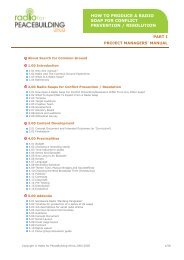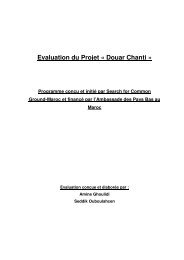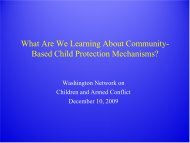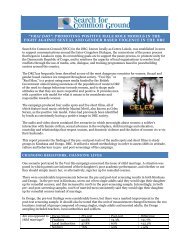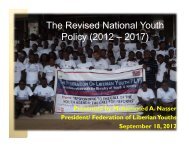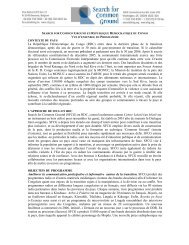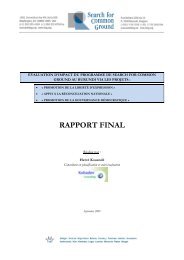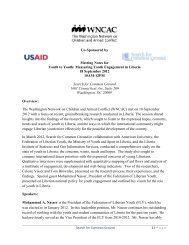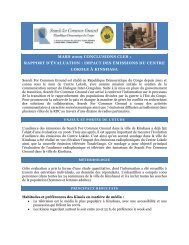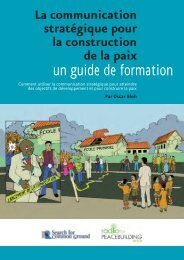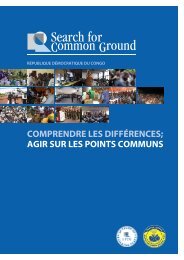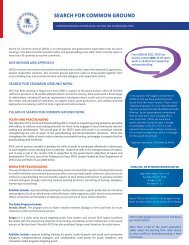The Common Ground Network for Life and Choice Manual
The Common Ground Network for Life and Choice Manual
The Common Ground Network for Life and Choice Manual
Create successful ePaper yourself
Turn your PDF publications into a flip-book with our unique Google optimized e-Paper software.
other people with the same label, depending on where they place themselves on the continuum.<br />
Using the idea of a continuum is also a way <strong>for</strong> people to share whatever dilemmas,<br />
struggles, <strong>and</strong> conflicts they may have about their own view. Within dialogue is a freedom to<br />
acknowledge pockets of uncertainty, or lesser certainty, value conflict, or mixed feelings that are<br />
rarely allowed in the public debate. Selecting a point on a continuum <strong>for</strong> one’s position allows<br />
<strong>for</strong> nuances <strong>and</strong> distinctions in a way that a label alone does not.<br />
Connective Thinking<br />
Connective thinking is a mindset that focuses attention on the strengths <strong>and</strong> insights of<br />
the other rather than on the weaknesses or flaws. This mindset assists the search <strong>for</strong> common<br />
ground by encouraging people to listen <strong>for</strong> the gems of wisdom, or pieces of truth, in what the<br />
other says. <strong>The</strong> practice of connective thinking can lead to the creation of a “web” of shared<br />
knowledge, woven from the threads of truth contributed by everyone. This web is bigger than<br />
anything known by a single person. Thus, connective thinking fosters the building of<br />
constructive relationships <strong>and</strong> the development of community because it ties together the best<br />
wisdom of each person.<br />
Personal Experience<br />
People bring their personal experiences with the issue <strong>and</strong> conflict to the search <strong>for</strong><br />
common ground. Each person has experienced life in a unique way. Personal experiences<br />
cannot be argued about nor agreed or disagreed with. <strong>The</strong>y are. Sharing life stories invites<br />
underst<strong>and</strong>ing responses from those who hear them. Because of this, dialogue between abortion<br />
opponents begins with asking people to share their personal experiences—the points in their life<br />
journeys that have influenced their movement in one direction or another—that have brought<br />
them to the views they now hold on the issue of abortion. This storytelling puts a human face on<br />
the conflict <strong>and</strong> allows people to listen to one another in a way that is not possible if the starting<br />
point is an exchange of positions.



